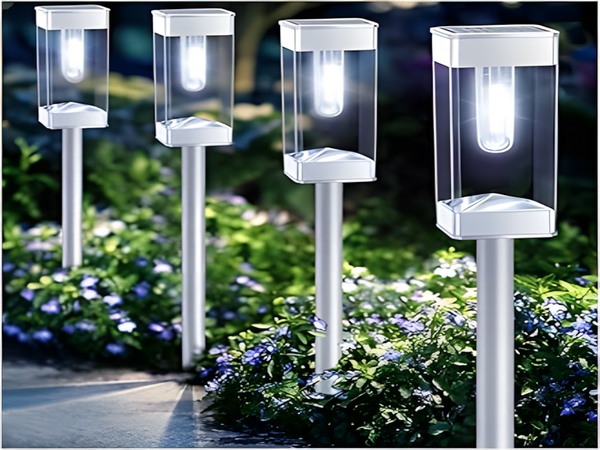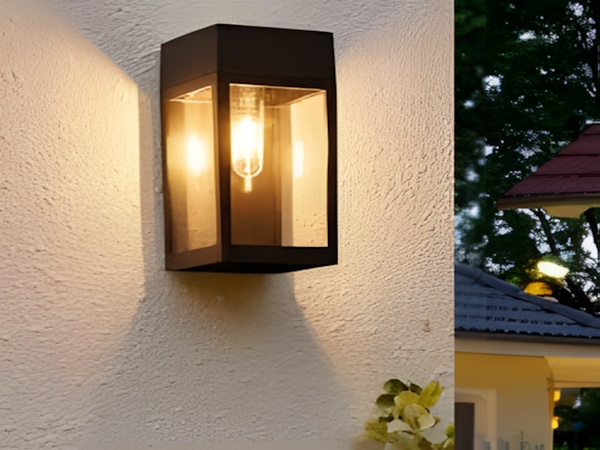
Summary: Every time a typhoon comes, outdoor streetlight poles need to face the test of wind resistance. With the advancement of urban modernization, metal pole streetlights have replaced concrete pole streetlights, which have become mainstream road lighting facilities. The wiring of streetlights has also shifted from overhead lines to buried cable installations. The construction of metal pole streetlights with buried pipelines imposes strict strength requirements on the foundations, involving safety checks on foundation screws, concrete strength, and soil compaction around the foundation. This paper focuses on the safety verification calculations for the design dimensions and strength of streetlight foundation screws and analyzes the common reasons for streetlight tilting.
Keywords: Urban Lighting, Wind Resistance Strength, Streetlights, Safety Verification, Streetlight Tilting
In the design of urban lighting construction drawings, lighting design standards are usually selected based on the road classification, pavement materials, structural forms, and road lengths, including average illuminance, illuminance uniformity, power density, and environmental ratios. These standards help determine the types of light poles, light sources, their power, lighting arrangements, spacing design, cable types, etc. Then, calculations are made for average illuminance, power density, and line voltage drop to verify if they meet the lighting design standards. The detailed structures of lamp poles, foundation designs, and lamp designs are all customarily tailored according to general components. However, the strength of the lamp poles, foundation strength, foundation screw strength, and soil quality have not undergone detailed safety checks. This paper conducts a force analysis on the strength of streetlight foundation screws and verifies the safety of the foundation while analyzing common reasons for lamp pole tilting during streetlight construction.
1. Operating Condition Assumptions
We assume a conventional single-arm streetlight with a height of 10 meters (vertical height from the centerline of the light fixture to the foundation flange plane) and wind resistance rated for typhoon level 12. The foundation follows Wuxi standards with a conventional depth of 1.4 meters. The flange size of the lamp post is 360*360mm, the foundation flange size is 410*410mm, and the foundation screws are 4*M20 with a screw center distance of 290mm. The lamp pole and foundation screws are both made of Q235 steel, with a bottom outer diameter of the lamp pole at 180mm and a top diameter of 68mm. Additionally, it is assumed that the lamp pole exhibits no elastic deformation, and both the lamp pole and foundation concrete can withstand the strength requirements without deforming or failing under the limit conditions of typhoon level 12. The detailed structural drawings of the lamp pole and foundation are as follows:
2. Lamp Pole Force Analysis
1. Simplified Force Diagram
According to material mechanics analysis, it is observed that before the lamp pole tilts, the four fixed screws on the flange contact surface bear a single tensile force. After the pole tilts, torque and shear forces will be generated on the foundation screws. The extreme force condition occurs when airflow passes horizontally along the direction of the arm. The overturning moment caused by the weight of the arm and lamp has a negligible effect on the lamp pole foundation and can be temporarily ignored. It can be seen that the support point of the lamp pole is at the edge of the flange below the pole, marked by a triangle in the diagram. The wind force acting on the lamp pole is treated as a uniformly distributed load, and the tensile force on the foundation screws is uniformly distributed. The simplified force diagram of the lamp pole is as follows:
2. Force Analysis
According to the design for typhoon level 12, with a wind speed of V=36.9m/s, the wind pressure is P=V²/1.6=851.01N/m². The lamp pole is a conical pole with a wind-facing area S1= (D+d)*H/2=(0.18+0.068)*10/2=1.24m². The wind-facing area of the lamp fixture is approximately S2=0.3m². The wind torque acting on the lamp pole varies dynamically with the pole’s cross-section and height, so approximate calculations are used here. The point of action of wind force on the foundation is approximated to be at the equal wind-facing area above and below. Based on calculations, this point is 2.93m away from the lamp pole foundation flange. The distance affected by wind force on the lamp fixture is 10m. Assuming each screw experiences a tensile force of F, by action-reaction principle, the tensile force exerted by the screws on the flange is also F, resulting in the force analysis diagram depicted in figure 4, where Fa=Fb=F.
3. Foundation Screw Force Calculation
The torque produced by wind force on the lamp pole is M_wind=F1*L1=P*S1*L1=851.01*1.24*2.93=3091.89N·m. The torque acting on the lamp fixture due to wind is M_light=F2*L2=P*S2*L2=851.01*0.3*10=2553.03N·m. The torque exerted by the screws on the lamp pole flange is M_screw=2Fa*La+2Fb*Lb=2Fa*0.2825+2Fb*0.0747.
Based on torque balance, M_screw=M_wind+M_light. From the force analysis, the force on the screws is equal, Fa=Fb. The final force on a single screw is F=7901.62N.

3. Actual Force Limit Calculation of Foundation Screws
Based on the conditions, the foundation screw material is Q235, with a design tensile strength of 215MPa. According to design manuals, the M20 screw has a minor diameter of 17.29mm, resulting in an effective cross-sectional area of M20 screws being πr²=234.79mm². Thus, the allowable tension is F_allow=215*234.79=50.480KN. If the tension applied to a single screw exceeds F_allow, it can transition from elastic deformation to plastic deformation. When necking reaches a certain degree, it will cause fracturing damage. For the lamp pole foundation, at the moment of plastic deformation, the forces on the foundation screws will transition from simple tension to a combination of tension and bending, accelerating the failure of the screws.
4. Safety Assessment of Foundation Screws
Based on the above calculations, under the impact of a level 12 typhoon, the actual instantaneous tension on each foundation screw is far less than the allowable tension F_allow. In conditions where the lamp pole does not deform or fail, where the strength of the concrete foundation is sufficient, and where the compaction of the foundation pit meets safety requirements, it is deemed safe. However, this does not consider the impact of dynamic loads on the foundation screws or the uneven distribution of wind loads along the lamp pole. From the safety factor perspective, the safety factor of the lamp pole is S=F_allow/F=6.39, significantly greater than the design safety factor of 1.3. Since there are no detailed safety requirements for lamp pole safety in road lighting, this aspect needs to be improved in future research.
5. Common Causes of Streetlight Tilting
Through streetlight surveys across multiple cities, it is often found that streetlights, which were all adjusted properly during construction, show tilting after one or two years of operation. Once the lamp pole tilts to a certain degree, it usually does not show signs of further tilting unless affected by severe weather which may lead to lamp pole collapse. However, streetlights built on elevated walls have never shown signs of tilting, even having the lamp pole broken, the flange at the base still securely fixed to the foundation. The reasons for this can be analyzed as follows:
1. Foundation Issues. Usually, road lighting projects are constructed simultaneously with road projects. New roads undergo soil excavation and backfilling in landscape areas, which often leads to inadequate compaction around the foundation after making the lamp pole bases. In such cases, once the lamp is installed, soil settlement alongside wind-induced swaying causes gradual tilt. In cases where streetlights are installed on sidewalks or paved surfaces, the compacted pavement provides better stability; hence, these streetlights rarely experience tilting.
2. Foundation Causes. Insufficient concrete strength and cracks in the foundation, loose screws in the concrete, or poorly secured foundation shims can lead to loose, rotating, or even pulled out foundation screws.
3. Screw Causes. While issues from the screws themselves leading to pole tilting are rare, common causes can include improperly tightened nuts or missing shims. Negligent construction can lead to one or two screws breaking without corrections made. In rare instances, poor design or quality of screws may result in breakage due to corrosion and inadequate maintenance, leading to severe accidents from pole collapse upon impact.
4. Flange Causes. This issue is also common, characterized by inadequate flange thickness, not meeting design specifications, or excessive mortar leading to instability of the lamp pole.
6. Significance of Force Analysis on Foundation Screws

Through analyzing the forces on the streetlight foundation screws, we can adopt safety factors in the design perspective. Consulting mechanical design handbooks or relevant references allows for quick selection of suitable screw designs, ensuring quality while maintaining safe operation of the streetlights. Furthermore, for designs not requiring extremely tall lamp poles, smaller screw sizes can be chosen under verified safety conditions, aiding in cost-saving and resource conservation, particularly in courtyard lighting designs. Nonetheless, solely verifying the strength of the streetlight screws is insufficient for ensuring operational safety; safety checks on the dimensions of lamp pole foundations and concrete strength must also be performed. Ensuring the foundations meet safety operation requirements alongside compaction calculations for surrounding soils guides construction. With these three types of safety calculations, the construction drawings of lighting designs will become more complete, comprehensive, and secure.



